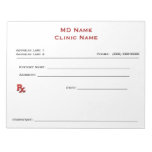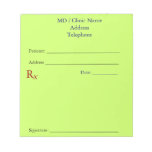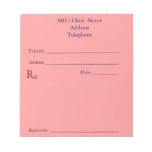Physicians are busy people, so staying on top of things can be challenging. No matter how skilled you are at time management, realistic scheduling, and organizational protocols within your practice, it’s pretty much expected that patients are still going to have to wait to see you.
And that wait is getting longer. For a variety of reasons, including a shortage of doctors, fluctuations in the availability of health care insurance, and an aging population, wait times are on the uptick.
According to a September 2017 survey from Merritt Hawkins, the wait time for a new patient appointment with a physician for a non-urgent visit has increased by 30 percent since 2014 in the 15 major metropolitan areas studied.
Increasing wait times add to the pressure of doctors who are already delayed. There are two orbs to every hourglass, though, and the sands of time weigh just as heavily on patients as they do on overwhelmed physicians. Patients, too, are busy people. And the inconvenience of waiting to see a medical practitioner can add more than frustration to their hectic lives. It can also add severity to their illness or injury.
The fact is, most doctors these days are in a Catch-22 situation. They simultaneously face a steady stream of patients and a seriously stressed system. And, like the sand grains in an hourglass, sooner or later something’s going to get clogged. In the case of a medical practice, that something is efficiency.
Knowing that people are lining up to see you is a given. The question is, are you worth the wait?
Here are six things you can do to enhance the experience patients have when they arrive to see you.
1. Create a pleasant waiting area. The initial thing your patients feel when they enter your door is your practice’s ambience. Tattered furniture, faded paint, and outdated reading material leave a less than stellar first impression. Sprucing up your waiting room needn’t cost a lot of time or money, and the investment will be appreciated. Replace scruffy chairs, freshen up the walls, stream some music or video, and subscribe to a variety of contemporary publications that are of interest to all populations. The family member I accompanied to myriad appointments, a male, said at more than one medical office, “I wish they had something to read other than old cooking, decorating, and gossip magazines!”
2. Provide realistic updates. Ask your receptionist to keep patients and/or their advocates updated about delays and schedule changes. Provide as much lead-time as possible to notify them about unforeseen cancellations or appointment changes. If you’re running more than 30-minutes behind, consider having a staff member call or text patients with an update so they can amend their plans. Yes, it sounds labor intensive, but it’s also respectful. And for those who are already in your waiting room, make sure someone updates them with accurate wait times. This will allow them to take care of details like changing their pick-up time if they’ve been dropped off, alerting others they’ll be late for their next meeting, or adding time to their parking in a paid lot.
3. Review the chart before you enter the examination room. Take a moment to familiarize yourself with the patients’ complaint, referral note, or history before you walk in the door. Naturally, you’ll determine both subjective and objective perspectives of their presenting condition during your assessment and examination. But having them sit there watching you read can cause an uncomfortable gap in the relationship. Briefly reviewing their chart in advance of entering the room enables you to start the conversation at a more informed level. It also ensures that when you greet your patients you’ll be making solid eye contact with them rather than with the paper or device in your hand.
4. Be patient. Most of us feel harried when we’re hurried. That sensation is contagious. When you’re feeling rushed, so will your patients. One of the ways hurrying rears its head is through impatience, often manifested by interrupting, finishing people’s sentences, sighing, or ceasing to listen. Avoid these pitfalls by taking a deep breath and imagining the person in front of you is one of your own loved ones. How would you want them to be treated and spoken to? Keeping that image in the back of your mind will help you find the patience to hear people out.
5. Confirm their comprehension. A lot of patients will smile and nod during medical conversations, even when they don’t have a clue about what you’re saying. And if they do understand what you’ve told them, they can easily forget the details when they leave. Clarify that they have a firm grasp of all diagnoses, test results, and next steps. If you have any written materials or website recommendations as a backup, share them or write a quick note in lay terms that they can refer to. Increasingly, patients are recording medical conversations.Think about setting policies regarding this growing trend so you’re not caught off guard when it happens in your practice.
6. Honor your commitments. Patients will take you at your word. If you say you’ll follow up in two weeks, do it. If you promise to send a referral letter that day, send it. And if you ask a patient to book an appointment the following week, make sure you’re going to be in town. While time flies by for you, it can stand still for your patients. That’s why it’s so critical that you do what you say, when you say you’ll do it.
So many giant leaps have been made in modern medicine, but decreased wait times isn’t among them…yet. You can make a difference, though. By following these guidelines, rather than testing your patients’ patience, you’ll honor them by making the wait worthwhile.





 Manual Prescription Pad (Large - Yellow)
Manual Prescription Pad (Large - Yellow)




